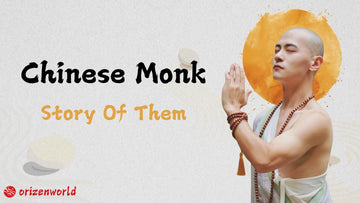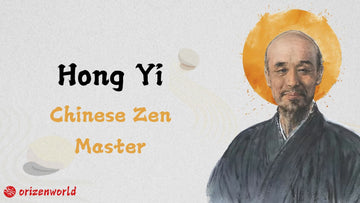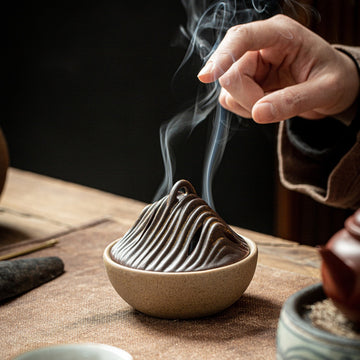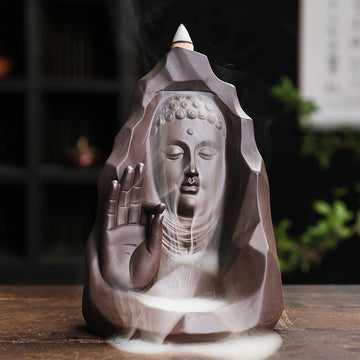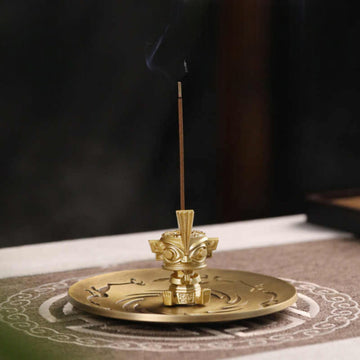The White Tiger is one of the Four Symbols, often mentioned alongside the Azure Dragon in Chinese culture. While its significance may not be widely understood outside of Chinese tradition, it holds deep meaning in both mythology and Feng Shui. In this article, let’s explore the story of the White Tiger, uncover its symbolism, and examine its role in Feng Shui, offering insight into its cultural importance and influence in daily life.
Like Western zodiac signs such as Sagittarius and Scorpio, the White Tiger originates from ancient Chinese astronomy. It is associated with the Seven Mansions of the Western sky: Kui, Lou, Wei, Ang, Bi, Zi, and Shen, making it the symbol of the West. Despite its name, the White Tiger is not literally white. Its "white" designation comes from the Five Elements theory, in which the West is linked to the element of metal, and metal is represented by the color white. Thus, the White Tiger's name is derived from cosmology rather than its physical appearance.
The worship of tigers in China can be traced back to the Chu culture, where the tiger was regarded as a sacred totem. The tiger has long been revered by the Han people as a symbol of justice, courage, and authority. According to legend, a tiger that lives for 500 years transforms into a White Tiger, becoming a divine being. In Daoist mythology, immortals are often depicted riding tigers to ascend to the heavens. As a guardian of the West, the White Tiger is frequently mentioned alongside the Azure Dragon, forming the classic Feng Shui concept of "Left Azure Dragon, Right White Tiger."
In Feng Shui, the White Tiger plays a significant protective role. It is believed to ward off evil spirits and maintain stability, making it an essential element in architectural and tomb designs. The presence of the White Tiger in traditional Feng Shui ensures balance and harmony, reinforcing its importance in both spiritual and practical aspects of life.
Since the Han Dynasty, the tiger has evolved into a guardian deity for common people rather than a symbol of imperial power. The tiger's image appears in folk art, decorations, and protective charms, symbolizing the dispelling of evil and the preservation of peace. Tiger-themed items such as hats and shoes are commonly made for children to bring them strength and protection.
Over centuries, the White Tiger has transcended its astronomical origins to become a cultural icon in Chinese society. It embodies the values of justice, courage, and divine guardianship, remaining an enduring symbol of strength and protection in folklore, Feng Shui, and spiritual beliefs.
As previously mentioned, the tiger is an integral part of Chinese culture, often symbolizing strength, courage, and warfare. While the dragon represents the supreme ruler in ancient China, the tiger is seen as the highest-ranking general, renowned for its ferocity and battle prowess.
In the minds of the ancients, the tiger was both feared and revered—feared for its ability to hunt and kill, yet respected for its unparalleled strength. The White Tiger, in particular, became a symbol of military power, leading to its association with warfare and defense. Many historical military emblems bore the name or image of the White Tiger, such as the White Tiger banners used by ancient armies and the tiger-shaped tally used as a military authorization token. Additionally, White Tiger imagery appeared on the gates of Han Dynasty stone tombs or was carved alongside the Azure Dragon on tomb lintels to ward off evil spirits.
The White Tiger is one of the Four Symbols (四象) in Chinese cosmology, alongside the Azure Dragon (青龙), Vermilion Bird (朱雀), and Black Tortoise (玄武). Each of these creatures represents a cardinal direction and has distinct symbolic meanings.
Azure Dragon (East): Positioned to the left of a dwelling, it symbolizes power, vitality, and prosperity.
White Tiger (West): Positioned to the right, it is associated with illness, injury, and unexpected misfortunes, emphasizing its dual nature as both a guardian and a potential harbinger of disaster.
Vermilion Bird (South): Positioned in front, it represents disputes, legal matters, and conflicts.
Black Tortoise (North): Positioned behind, it signifies the support of influential figures, as well as social and financial stability.
Through its long-standing cultural presence, the White Tiger continues to symbolize power, authority, and protection, maintaining its place as a revered and significant figure in Chinese tradition.
In Feng Shui, the White Tiger is often mentioned alongside the Azure Dragon, forming the well-known concept of "Left Azure Dragon, Right White Tiger" (左青龙,右白虎). This pairing originates from their symbolic relationship.
The White Tiger is associated with fierce energy, governing matters of death, destruction, and strict discipline. However, it also possesses protective qualities, warding off evil, averting disasters, and ensuring prosperity. As a Metal element symbol in the Five Elements , it represents contraction, stillness, and decline. In contrast, the Azure Dragon, associated with the Wood element and the east, signifies growth and expansion, symbolizing career success and masculine energy in Feng Shui.
Understanding the White Tiger’s directional significance allows for better Feng Shui adjustments in homes and workplaces to achieve balance and harmony. The White Tiger is positioned on the right side of a residence or building, typically defined as the right-hand side when facing the main entrance. Properly managing this area can influence financial stability, interpersonal relationships, and overall well-being.
A key principle in Feng Shui is that the White Tiger area should remain calm and stable. If this area is overly active—such as being near busy roads, factories, or noisy environments—it may lead to family discord, financial instability, and emotional unrest.
Additionally, the White Tiger side should not be taller or more dominant than the Azure Dragon side. If the right side of a house or office is significantly higher—such as with a towering building while the left side is low or empty—it creates an imbalance known as "White Tiger Raising Its Head" (白虎抬头), which can negatively impact male residents, causing disputes, financial loss, or health problems.
For optimal Feng Shui, it is advisable to ensure that the White Tiger side remains lower and quieter while the Azure Dragon side is slightly elevated. If the White Tiger side is too aggressive, remedies such as adding greenery or water elements on the left can help counteract imbalances and restore harmony.
In Feng Shui, identifying the positions of the Azure Dragon and White Tiger requires careful consideration of the surrounding environment. Different methods apply depending on the setting:
Using the human body as a reference, the left side represents the Azure Dragon, while the right side corresponds to the White Tiger. However, in residential Feng Shui, the specific layout and environment play a crucial role in determining their exact positions.
When facing outward from the main entrance, the left side is the Azure Dragon’s position, and the right side is the White Tiger’s. Ideally, a home should have solid support at the back, such as a mountain or higher ground, while the front remains open and spacious to create balance.
For homes facing south, the east naturally aligns with the Azure Dragon, symbolizing growth, while the west corresponds to the White Tiger, representing stability. This follows classic Feng Shui principles, where the rising sun in the east signifies vitality and renewal.
In modern buildings, the main entrance or the primary source of natural light, such as a balcony, serves as the reference point. Standing inside the entrance or by the balcony, the left side aligns with the Azure Dragon and the right with the White Tiger, allowing these principles to adapt to contemporary architecture.
After reading about White Tiger Feng Shui, you may have noticed that your home’s layout is not entirely favourable or could even be detrimental. To help you neutralise negative influences, here are some expert recommendations:
When addressing White Tiger Feng Shui issues, it is advisable to carefully select appropriate Feng Shui items and make adjustments based on expert consultation. Additionally, fostering a harmonious and tidy living space remains a fundamental principle of good Feng Shui.
By applying these methods, you can effectively counteract the negative impact of an unfavourable White Tiger position and create a more balanced and peaceful home environment.
The White Tiger, a legendary mythical beast with a history spanning thousands of years, appears frequently in Chinese culture through various art forms. In traditional Chinese art, the White Tiger is often depicted in paintings, sculptures, and architecture as a symbol of strength, power, and protection. These artistic representations highlight the tiger’s fierce presence, sometimes portrayed in motion to signify its might.
In literature, the White Tiger appears in numerous ancient texts and folklore, where it is associated with auspicious and protective qualities. Often, it is featured alongside other mythical creatures like the Azure Dragon, Vermilion Bird, and Black Tortoise, representing the balance of forces in nature.
Architecturally, the White Tiger is commonly seen in carvings on tombstones, gates, and temples, where it is believed to ward off evil spirits and protect the living. During the Han Dynasty, the image of the White Tiger was widely used in military contexts, such as on banners and seals, symbolizing strength and courage.
Over different historical periods and regions, the depiction of the White Tiger has evolved, but its association with power, protection, and strength has remained consistent, reflecting its enduring significance in Chinese culture.
In contemporary society, the White Tiger continues to hold significant influence, adapting its traditional symbolism to various modern contexts. One notable application is in branding, where the White Tiger is used to convey power, prestige, and fierce strength. For instance, it often appears in logos for sports teams, luxury products, and entertainment industries, symbolizing aggression and excellence.
In the world of entertainment, the White Tiger frequently appears in films, television shows, and video games. Popular games like King of Glory incorporate the White Tiger element by giving characters skins inspired by the beast, amplifying its mythological associations with power and protection. The use of the White Tiger in these games connects traditional folklore with modern-day interactive entertainment.
Additionally, the White Tiger has found its way into contemporary slang and popular culture. Among younger generations, it has become a trendy term, sometimes used in ways that diverge from its original cultural meaning. For example, the term "White Tiger" has been used to describe women who shave their pubic hair, which reflects how traditional symbols can take on new, and sometimes controversial, meanings in today's society.
Thus, the White Tiger continues to evolve, blending its rich cultural heritage with modern trends and innovations.


